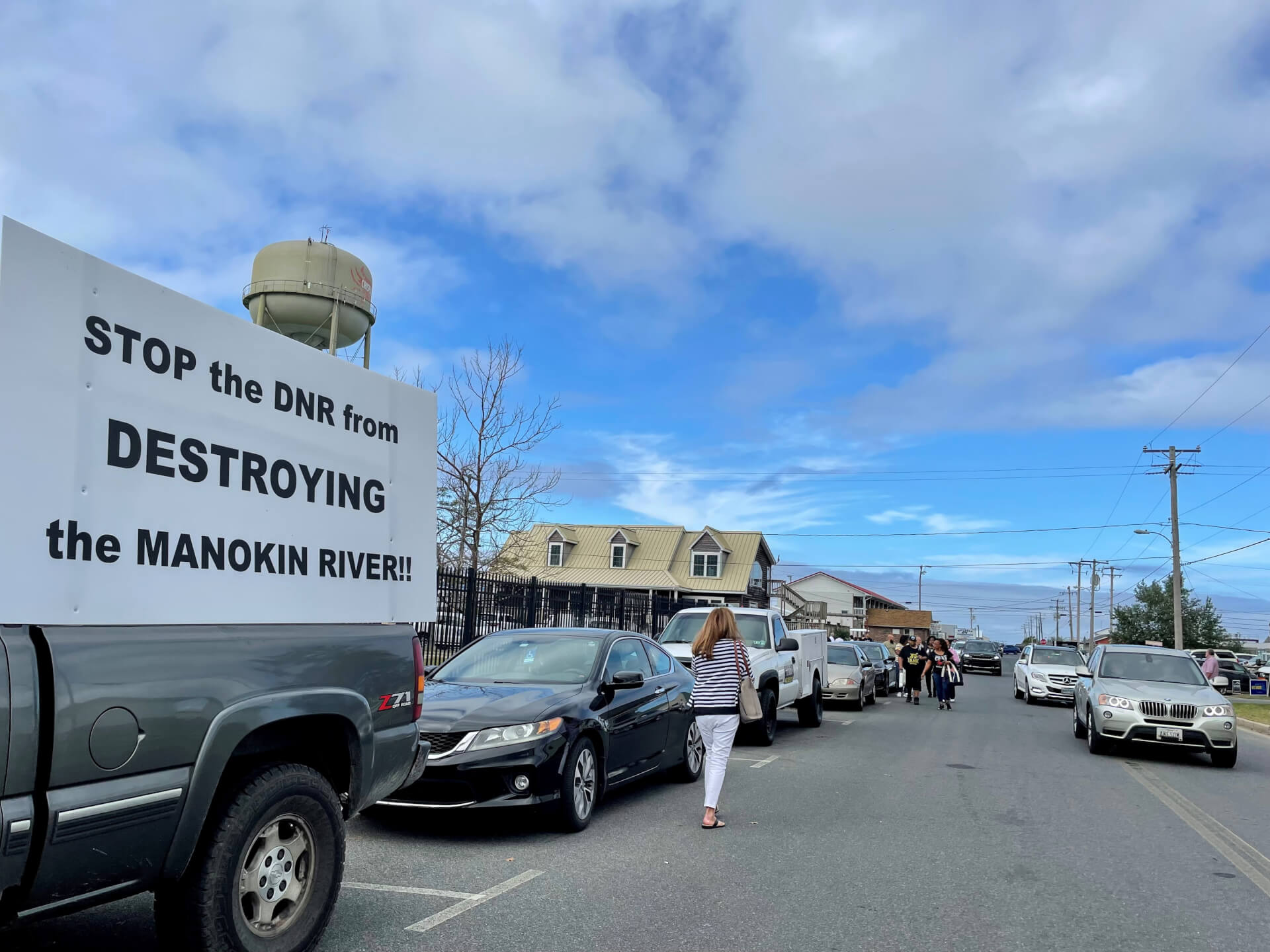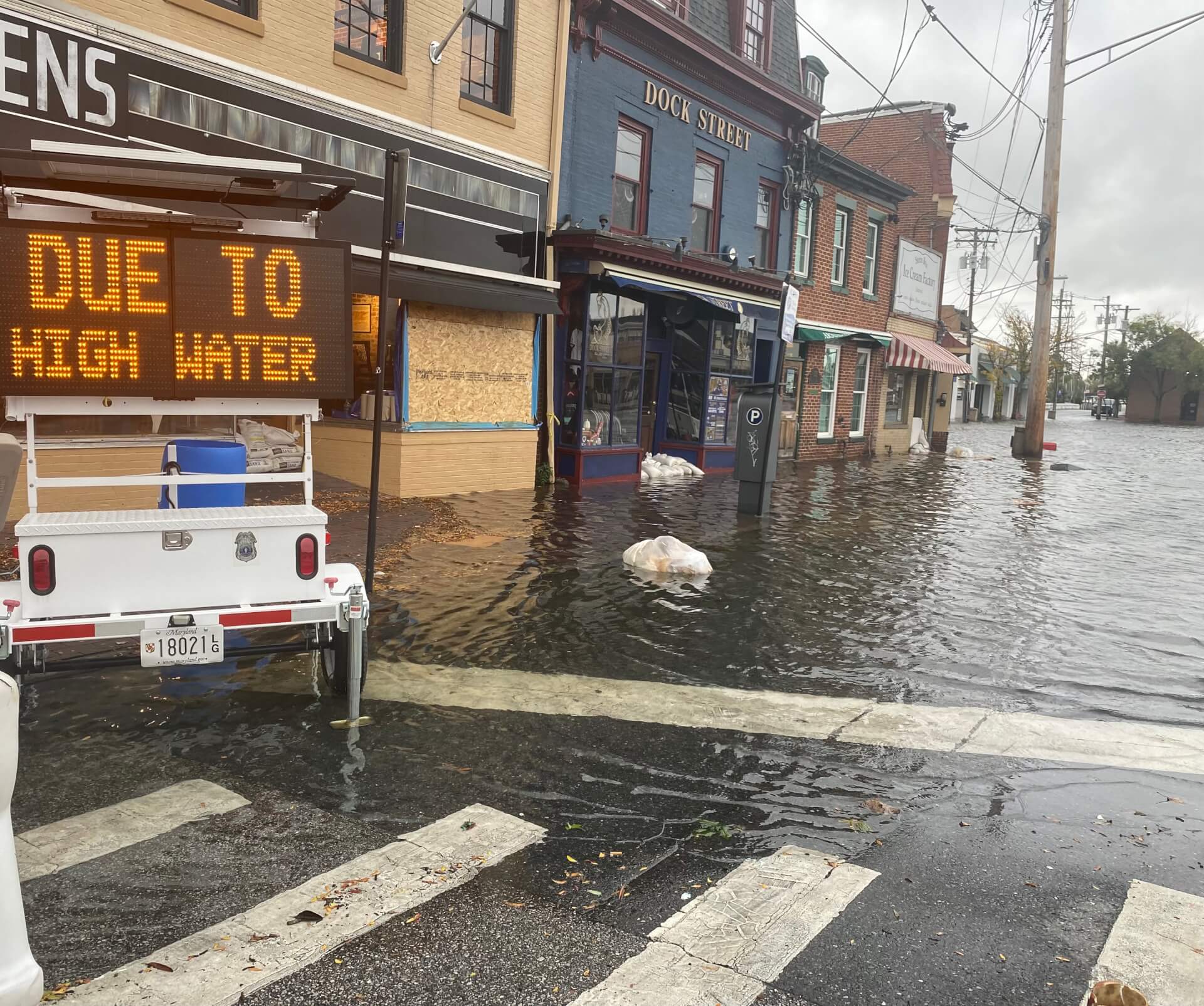Court Date Set for Stalled Maryland Oyster Restoration Project

By Timothy B. Wheeler
Oyster restoration work on Maryland’s Lower Eastern Shore remains stalled at least until March 18. That is the scheduled date for a court hearing on a lawsuit brought by Somerset County seeking to block the state Department of Natural Resources from building new reefs in the Manokin River.
Seeding of the river with hatchery-reared oysters began last year, but the start of reef construction has been held up since fall. On Nov. 9, Somerset Circuit Court Judge Mickey J. Norman issued a temporary restraining order barring DNR from proceeding with the work.
DNR plans to rebuild reefs and plant hatchery-spawned oysters across 421 acres of river bottom in the Manokin, a $30 million project that’s the largest such restoration in the Chesapeake Bay region.
The Manokin is the last of five Maryland tributaries targeted for large-scale oyster restoration under the 2014 Chesapeake Bay Watershed Agreement, which commits Maryland and Virginia to restore oysters in 10 tributaries by 2025, five in each state. Initial restoration work is complete in six of those tributaries.
The Somerset board of commissioners filed the suit on Oct. 28 at the behest of local watermen opposed to Manokin restoration project. In their complaint, county officials argued that the planned use of stone to build reefs would make it “impracticable, bordering on impossible,” to harvest oysters in the river and would also disrupt crabbing and other fishing.
Lawyers for DNR countered that the restoration won’t affect wild oyster harvesting because it hasn’t been allowed in the Manokin since 2010, when the state designated it a sanctuary. They said the county’s claims that crabbing and fishing would be hurt are “speculative” and don’t justify halting the project.
A key element in the county’s lawsuit is its claim that the county, rather than the state, has jurisdiction over the river and should get to decide what happens there.
DNR’s lawyers countered that, by law, the state owns “submerged lands” and has regulatory authority over the waters above those river bottoms.
The law and previous court rulings would seem to support the state’s case, according to Sarah Everhart, a senior research associate and legal specialist with the University of Maryland School of Law. A county can regulate some activities in waters within its boundaries, such as docks, piers and wharves, she said. But the county can’t assert control over activities in the waters that the state is already regulating.
Courts have sided with the state, for instance, when counties have attempted to limit state-regulated leasing of offshore waters or bottom areas for oyster farming, Everhart noted. In this case, the state is carrying out a legislatively authorized restoration project.
“I think it’s going to be an uphill battle to try to claim that a county’s jurisdiction would trump a state’s jurisdiction when the state has exercised that authority,” she said.
The judge’s orders skirted that question, but he decided that the risk of permanent, irreversible harm to fisheries was too great, so he blocked the reef work until he could hear arguments from both sides.
DNR officials have said they are forced to build reefs from stones because there’s not enough old oyster shell to meet all of the needs. Stones would be deposited on 157 acres of river bottom, or a little more than one-third of the project. In response to the watermen’s complaints, DNR Secretary Jeannie Haddaway-Riccio has said the stones would be smaller than those used in any previous restoration project.
The Manokin restoration project covers a 25-square-mile swath of the river, all of it off limits to commercial oyster harvesting since 2010. Watermen contend the river’s sanctuary status has deprived them of access to once-productive oyster reefs, and they contend the state once promised to open the river to the fishery after a few years.
Tim Wheeler is the Bay Journal’s associate editor and senior writer, based in Maryland. You can reach him at 410-409-3469 or [email protected].



 Creative Commons Attribution
Creative Commons Attribution